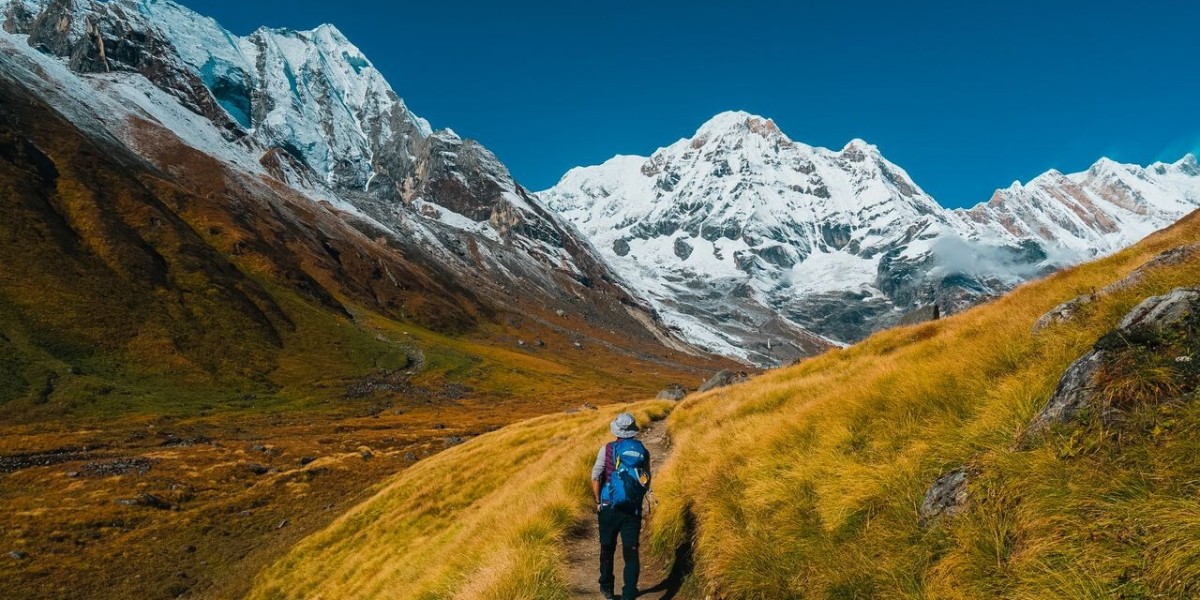Introduction
Nepal, nestled in the lap of the Himalayas, is a paradise for trekkers and adventurers. Among its many breathtaking trekking routes, the Annapurna Base Camp trek stands out as a must-do journey for those seeking a blend of natural beauty, cultural immersion, and challenging terrain. In this comprehensive guide, we'll take you through the Annapurna Base Camp trek, providing you with all the essential information to embark on this unforgettable Himalayan adventure.
The Route
The Annapurna Base Camp trek, also known as the ABC trek, is a trekking route that leads you to the base camp of Annapurna I, one of the world's highest peaks. This trek is located in the Annapurna Conservation Area, a protected region that encompasses diverse landscapes, from lush forests to high-altitude alpine meadows.
The journey typically begins in Pokhara, a charming lakeside town that serves as the gateway to the Annapurna region. From Pokhara, you'll drive or take a short flight to Nayapul, the starting point of the trek.
Duration and Difficulty
The Annapurna Base Camp trek can be completed in approximately 7 to 12 days, depending on your chosen route and pace. It's considered a moderate trek, making it suitable for trekkers with various levels of experience. While it doesn't require mountaineering skills, a good level of fitness is recommended to tackle the challenging terrain and varying altitudes.
Best Time to Trek
The ideal time to undertake the Annapurna Base Camp trek is during the autumn (September to November) and spring (March to May) seasons. These months gives durable climate , clear skies, and comfortable temperatures for trekking. The monsoon season (June to August) should be avoided due to heavy rainfall and increased risk of landslides.
Permits and Regulations
To trek in the Annapurna Conservation Area, you'll need two permits: the Annapurna Conservation Area Permit (ACAP) and the Trekkers' Information Management System (TIMS) card. These permits help fund conservation efforts and ensure your safety during the trek.
Accommodation
The trekking route is dotted with teahouses and lodges, offering basic but comfortable accommodation and meals. You won't need to carry a heavy backpack, as these teahouses provide meals and a place to sleep. However, it's a good idea to book accommodation in advance during the peak trekking seasons.
Highlights of the Trek
- Scenic Landscapes: The trek offers a stunning variety of landscapes, from subtropical forests filled with rhododendron and bamboo to terraced fields and high-altitude meadows. You'll also encounter glaciers and moraines as you approach the base camp.
- Cultural Experiences: Along the route, you'll pass through traditional Nepali villages inhabited by various ethnic groups like the Gurung and Magar. This provides an opportunity to immerse yourself in the local culture, taste traditional cuisine, and witness the warm hospitality of the people.
- Base Camp Views: The climax of the trek is reaching Annapurna Base Camp itself, where you'll be rewarded with awe-inspiring views of Annapurna I, Annapurna South, Hiunchuli, and other peaks. The sunrise and sunset views from here are nothing short of magical.
- Hot Springs: After the trek, you can relax your tired muscles in the natural hot springs at Jhinu Danda, a delightful treat for your body.
Packing Essentials
When packing for the Annapurna Base Camp trek, it's essential to be prepared for varying weather conditions. Some items to include are:
- Trekking boots: Ensure they are comfortable and broken in.
- Trekking poles: Help with balance on steep descents.
- Water purification tablets: Safe drinking water is crucial.
- First-aid kit: For minor injuries and illnesses.
- Sleeping bag: Suitable for cold temperatures.
Safety Considerations
Trekking at high altitudes comes with certain risks. It's crucial to acclimatize properly by ascending gradually and drinking plenty of water. Altitude sickness can be a serious concern, so be prepared to descend if you experience severe symptoms.
Conclusion
The Annapurna Base Camp trek is a journey that combines the best of nature and culture in the heart of the Himalayas. With its diverse landscapes, rich cultural experiences, and breathtaking views, this trek is a dream come true for adventure seekers and nature enthusiasts alike. Remember to plan ahead, stay safe, and cherish every moment of this unforgettable Himalayan adventure. Happy trekking!



